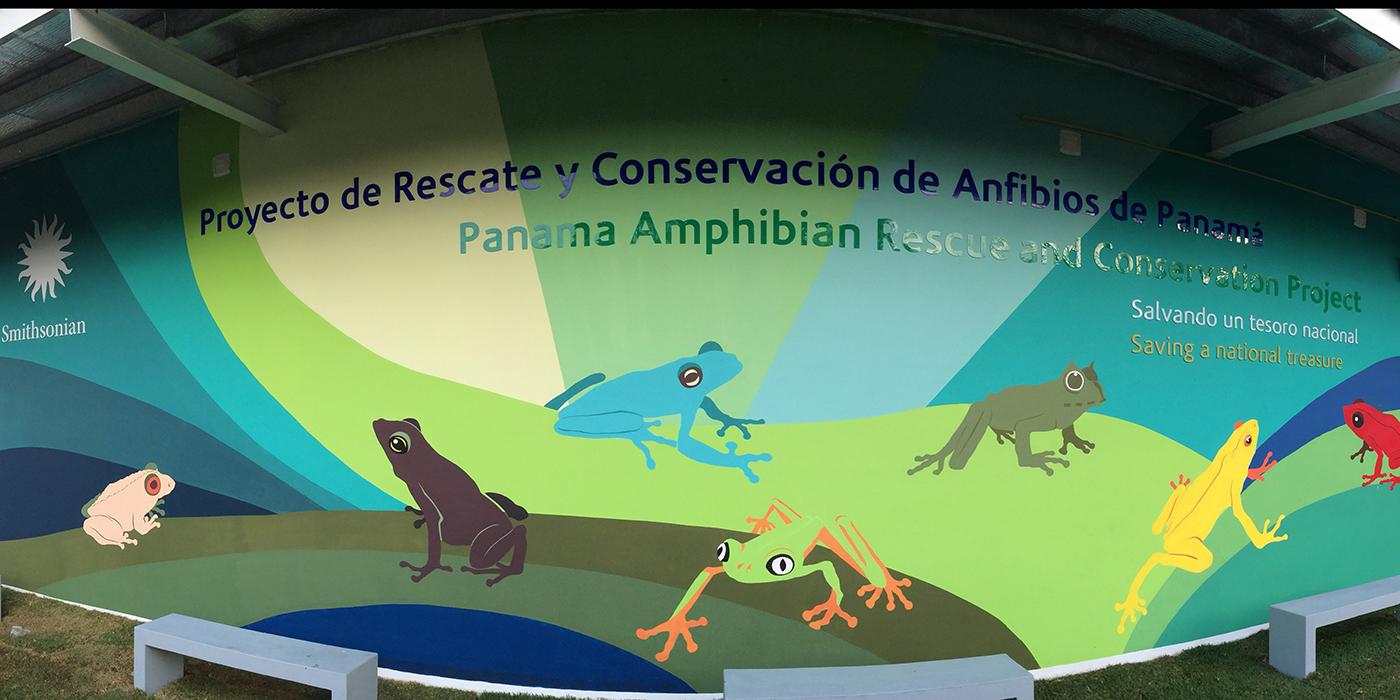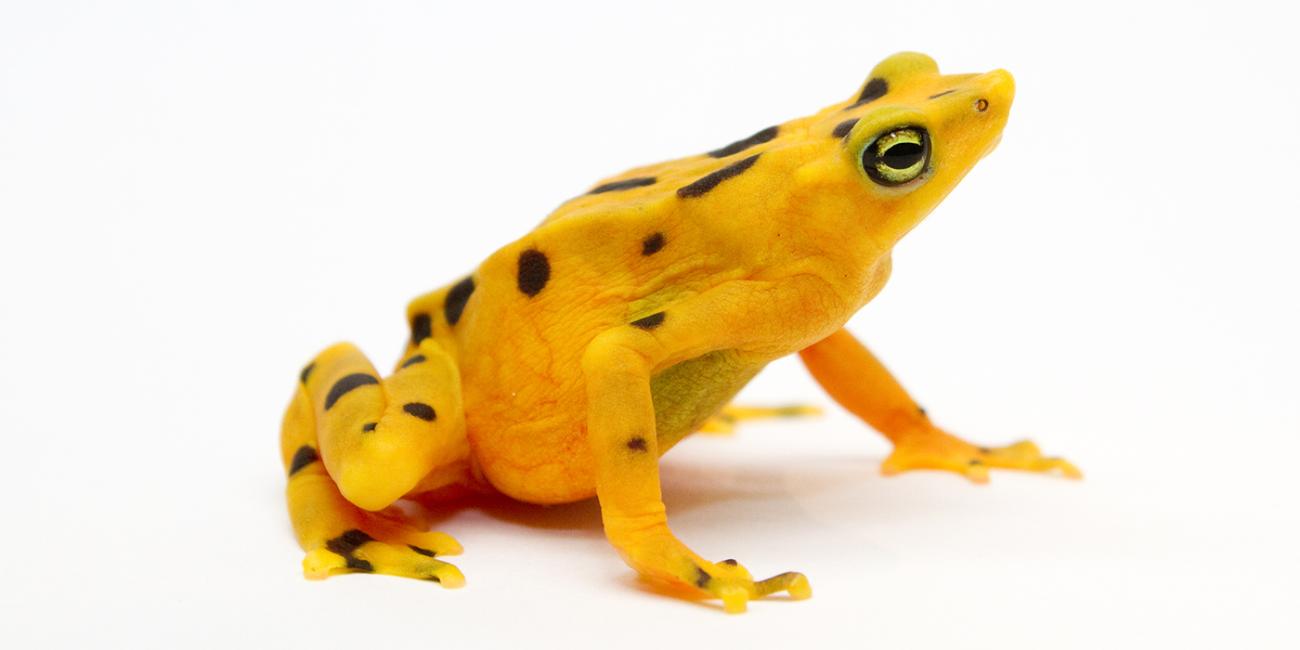Panama Amphibian Rescue and Conservation Project
The Panama Amphibian Rescue and Conservation Project seeks to rescue and establish assurance colonies of amphibian species that are in extreme danger of extinction throughout Panama. The Smithsonian Conservation Biology Institute’s Center for Species Survival focuses efforts and expertise on developing methodologies to reduce the impact of the amphibian chytrid fungus (called Bd) so that one day, captive amphibians may be reintroduced to the wild.
The project is a partnership between the Cheyenne Mountain Zoo, the Smithsonian Tropical Research Institute (STRI), the Smithsonian Conservation Biology Institute and Zoo New England. The rescue project currently has 12 endangered species housed in a 5,000 square-foot facility at the Smithsonian Tropical Research Institute in Gamboa, Panama, and public exhibitions at the Punta Culebra Nature Center in Panama City, as well as the Smithsonian National Zoo’s Reptile Discovery Center and Amazonia Science Gallery. Husbandry staff from participating zoos regularly visit the project to assist with husbandry, exhibits, maintenance, development and field trips. The rescue project’s new laboratory for conducting research on the captive collection welcomes new project partners or research collaborations that use the living collection, prioritizing research that may allow researchers to conduct successful reintroductions of amphibians into Bd-positive habitats. Please visit the Amphibian Rescue and Conservation Project website.
Current Partners
- Cheyenne Mountain Zoo
- Smithsonian Conservation Biology Institute
- Smithsonian Tropical Research Institute
- Zoo New England
Steering Committee
- Bob Chastain, President and CEO Cheyenne Mountain Zoo
- Matthew Larsen, Director Smithsonian Tropical Research Institute
- John Linehan, President and CEO Zoo New England
Implementation Team
- Eric Baitchman and Bryan Windmiller (Zoo New England)
- Liza Dadone and Eric Klaphake (Cheyenne Mountain Zoo)
- Roberto Ibanez and Jorge Guerrel (STRI)
- Brian Gratwicke and Matthew Evans (Smithonian's National Zoo and Conservation Biology Institute)
- Brad Wilson (Atlanta Botanical Gardens)
Active Collaborators
Gina Della Togna, Cori Richards Zawacki, Doug Woodhams, Phil Jervis, Jamie Voyles, Donna Snellgrove
Support
In addition to institutional partners listed above, this work is generously supported by Anele Kolohe Foundation, Shared Earth Foundation, the National Geographic Society, the Mohammed Bin Zayed Species Conservation Fund, the Smithsonian Women’s Committee, the Waltham Foundation, the Morris Animal Foundation, The Woodtiger Fund and private donors.













